Washers and dryers are easily one of the most expensive appliances to own. Not so much that they’re expensive to purchase, but they can be costly to run, especially if you don’t know ways to cut back on costs while using them.
You can save money on laundry using cold water instead of hot water. A washing machine does not consume much electricity, compared to the heater used to heat water from cold to hot when running a load.
If you’re feeling the pinch of spending too much money while doing laundry and need ways to cut back on costs, the following article will help you do just that.
Use a Cold Water Setting
The temperature setting is one of the biggest culprits concerning energy costs when using a washing machine. Some people don’t know that the washing machine may not consume much electricity.
However, the heating component used to heat water does use a lot of electricity.
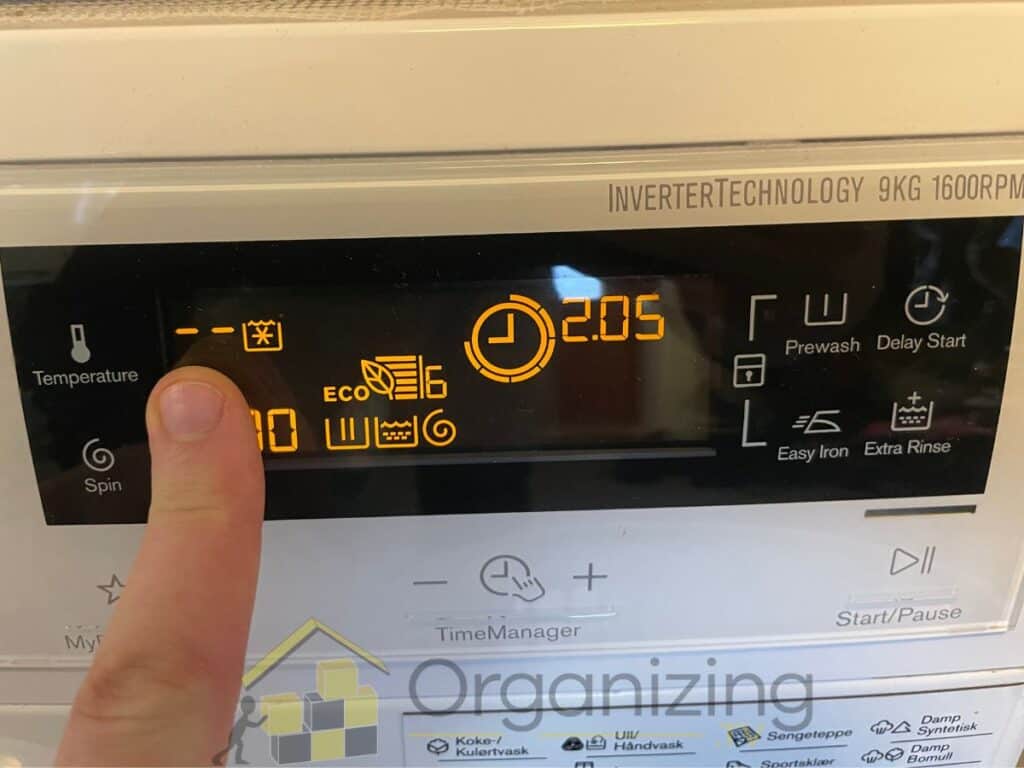
So, the easiest way to cut the cost of laundry in half is to set your washing machine to the coolest setting. Most clothes will still come out clean if you wash them using cold water. Only occasionally will you need to wash clothes using hot water.
For example, only use hot water to wash clothes stained with oil. If you read the label on most of your clothes, you’ll find that they require only a cold wash. Additionally, using cold water can also help your clothes last longer.
Use the Quick Wash Setting
Unless your clothes are extremely dirty, they do not require a full washing cycle to get clean. Thankfully, modern washing machines now come with a ‘Quick Wash/‘Quick Load’ feature that allows you to clean your clothes quickly.
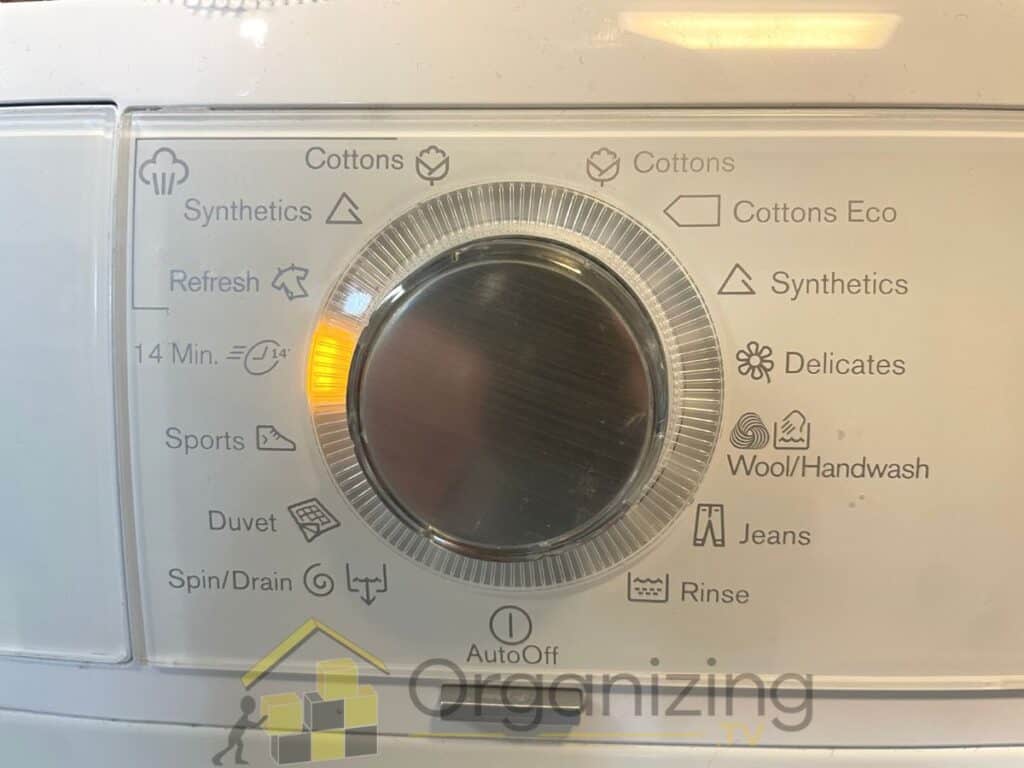
Depending on the type of washing machine, a quick wash can last anywhere from 15 minutes to an hour. This feature uses half the amount of time, energy, and water than a regular cycle would. This setting is designed for quick, easy loads that are not too dirty. It is also best used when you do not have time.
Even though this setting does save you time, energy, and water, it should never replace a full washing cycle when necessary. You can, however, save on costs if you only need to wash a few items that are lightly soiled and when you do not have the time to do a complete laundry cycle.
Quick wash settings are also less damaging to your clothes. Because of how fast the quick wash setting cleans your clothes, they experience less wear and tear, which in turn helps increase their durability.
Fill Your Machine to Full Capacity
Avoid running smaller loads multiple times compared to running one large load. Whether the washing machine is at half capacity or full capacity, it will still use the same amount of water, detergent, and energy.
It will also take longer to load and reload several smaller piles of laundry than a big one. So, you also end up spending more time.
One way to cut back on costs is to ensure your washing machine is at full capacity for all its loads. The only time it is not necessary to have a full load is during a quick wash. However, never allow the machine to be at half-capacity for all your other laundry needs.
For example, an Energy Star-certified washer uses 12 gallons (45.4 liters) per load, compared to older and less energy-efficient models, which may use 24 gallons (90.8 liters) per load.
Instead of washing smaller loads that still use the same amount of water, wait until you have one large load and wash it all at once. This way, you can cut back on the water and electricity used.
You must also note that even though I’m encouraging you to load your machine to full capacity, you must never overload it, especially on a front loader. You will only overwork your machine, and the clothes may not even spin properly, leading to soap and dirt residue.
To prevent overloading your machine, know its capacity and weigh your clothes beforehand when possible.
Get Creative With Detergent
If you’re looking to cut back on laundry costs, another way to do so is to explore your creative side regarding detergent.
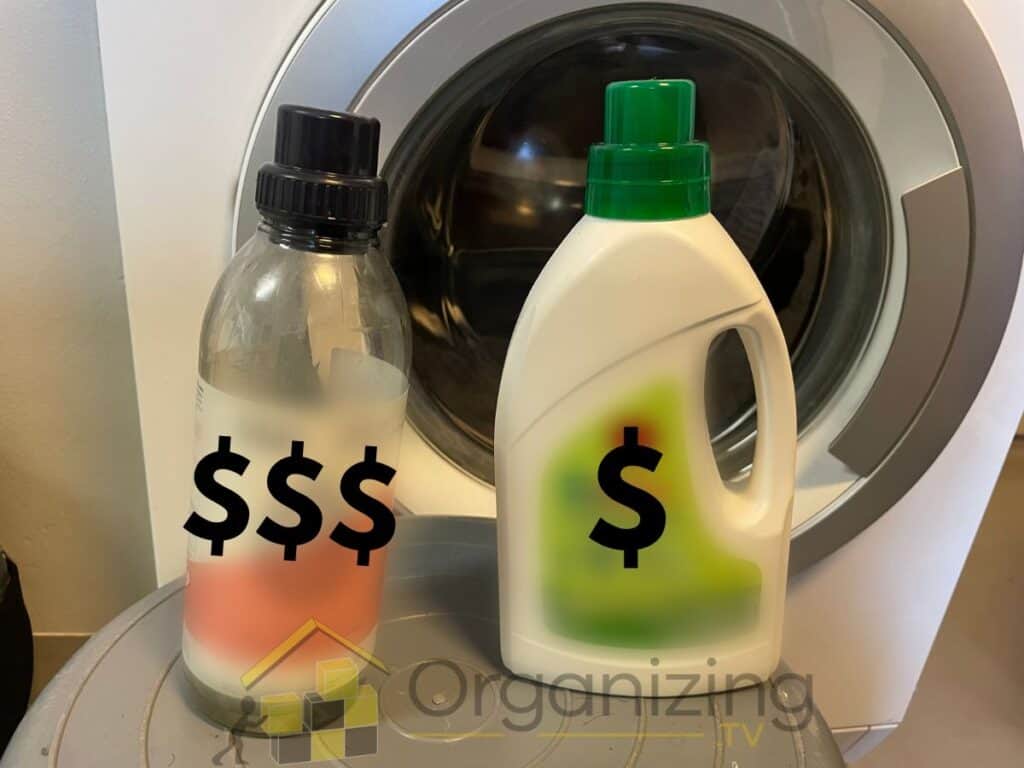
Although a brand like Tide is popular, it does not always mean it’s the best or most affordable option. Sometimes, little-known brands offer the same, if not more, quantity for half the price of a bigger brand name.
On your next shopping trip, try to look for detergents that cost less than your favorite brand. Always ensure you get value for money by looking at the size of the detergent and the number of loads it offers.
For example, a laundry detergent offering 140 loads for 1.5 gallons at $20 is cheaper than one offering 64 loads for 96oz at $13.
Another hack to reducing the detergent cost is simply using half the required amount per load. Instead of using a full bottle cap of detergent per load, you can use half or three-quarters of it.
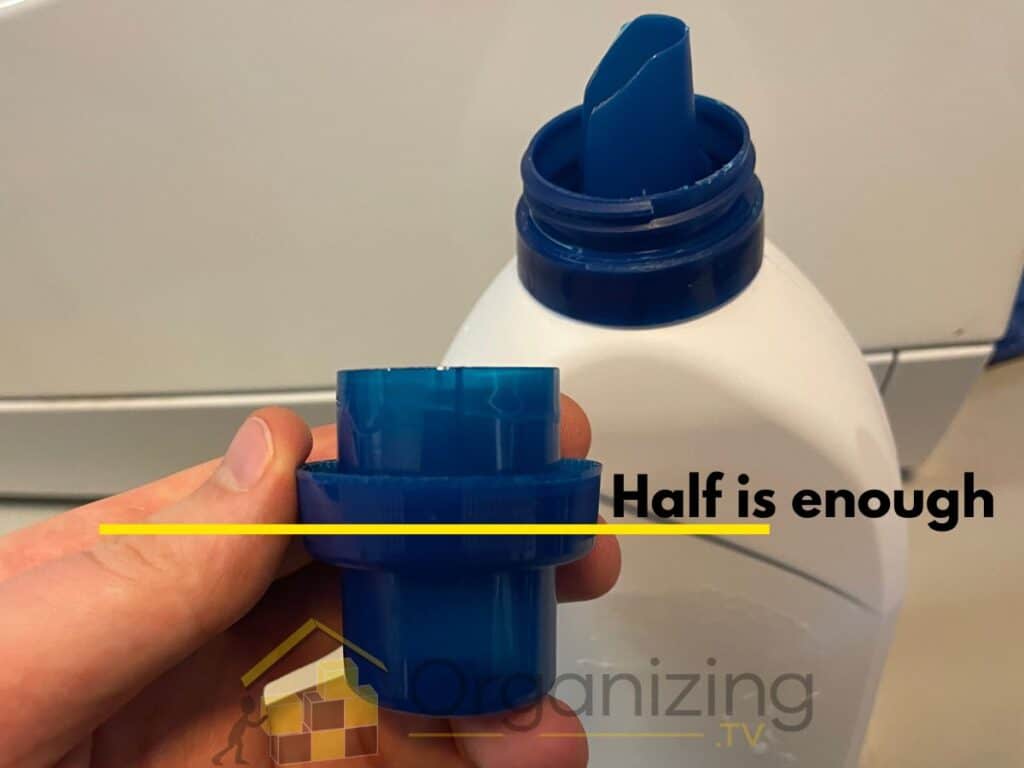
Brands may want you to use more detergent so that you run out and buy more. To prevent this, use a little less detergent for each load. Your clothes will still come out fresh and clean, and you get to save money.
Another option is to make your own detergent at home. If you have the time and love the idea of a DIY laundry detergent, then this is an option you can try out that can eventually help you save money.
Making your own detergent, especially in large batches, reduces the amount you spend on store-bought detergent.
Use Vinegar as a Laundry Booster
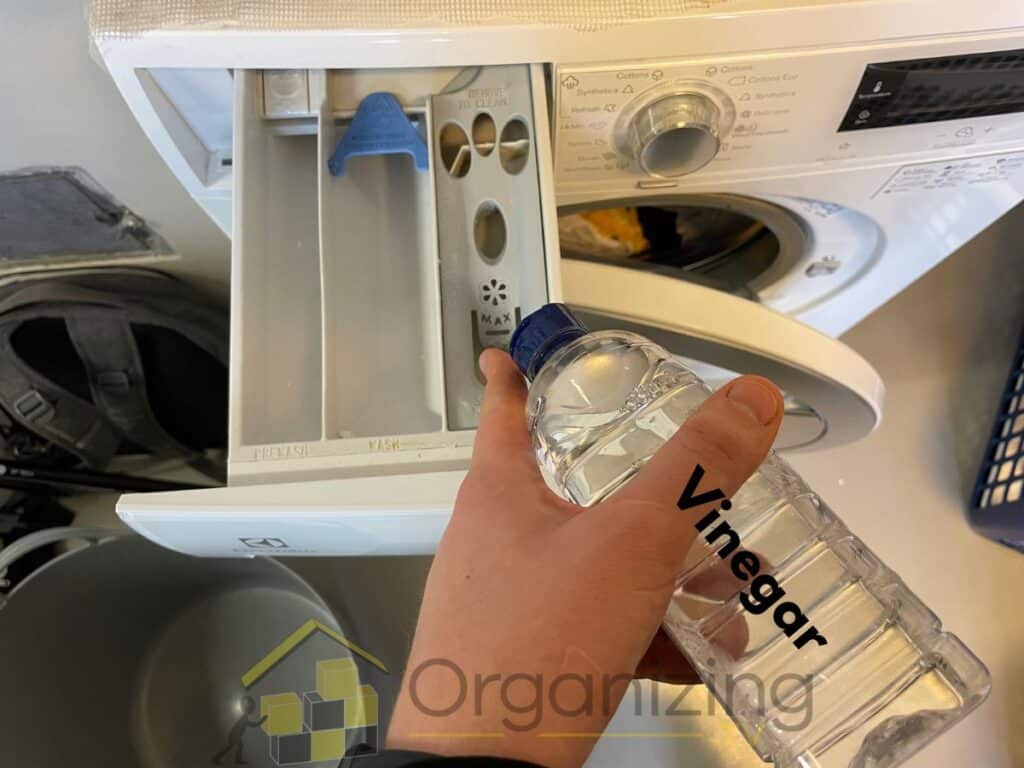
One of the best-kept secrets when doing laundry is probably sitting in your pantry right now! Vinegar. And yes, vinegar is not only great for salads. You can also use it to soften and whiten clothes, clean your machine, and dispel bad odors from clothes.
Instead of an expensive fabric softener, opt to use vinegar instead. It serves the same purpose. Vinegar softens and fluffs up clothes, helping remove the stiffness that can often result from washing clothes in a machine.
Additionally, vinegar helps remove any stains and detergent residue on clothes. This will lead to cleaner and brighter-colored clothes; Adding just ½ a cup of vinegar per load does the trick.
Have a couple of whites that need whitening? As an acid, vinegar will keep your whites white, and you no longer have to worry about yellowing.
You can purchase large quantities of vinegar from Amazon, like Iberia Distilled Vinegar. This 5% acidity brand offers great value for money, and the bottle will likely last you the whole year.
Whichever brand you choose, ensure it is distilled vinegar only. Regular vinegar contains tannins that can stain your clothes. You can also use cider vinegar, but dilute it with water before adding it to the machine.
When using vinegar, ensure you never mix it with the detergent. Soaps are a base, while vinegar is acidic. If you combine the two, they will neutralize each other.
In your washing machine, place the detergent in the detergent compartment, but put the vinegar where you would normally place the fabric softener. The machine will use the vinegar towards the end of the wash in the rinse cycle after all the detergent’s been rinsed out.
You may need to tweak this for a top loader. The same applies; do not mix the detergent and vinegar. Instead, you want to wait until the detergent cycle is complete before adding the vinegar.
Line Dry Clothes

Drying consumes a lot of electricity because the machine needs a lot of heat to dry the clothes. A nifty trick is to line dry clothes instead. You can do this by using a drying rack or an old-fashioned clothesline.
Using any of these methods to dry clothes instead of a dryer can help reduce the amount of electricity used.
For example, if you do several loads of laundry on the same day, you can have one load dry in the drying machine and the second load dry on a clothesline or a drying rack. This will help save you time and electricity instead of waiting to dry the second load in the machine after the first.
A drying rack is the most suitable option because it is portable, allowing you to place your clothes in the most suitable place to dry, like out in the sun. You can also place the rack where there is a lot of air circulation.
Sometimes, clothes come out of the washing machine looking like they’ve been chewed on. An additional plus to hanging clothes on a line or rack is that they can dry wrinkle-free.
Adjust Heat Settings for Drying
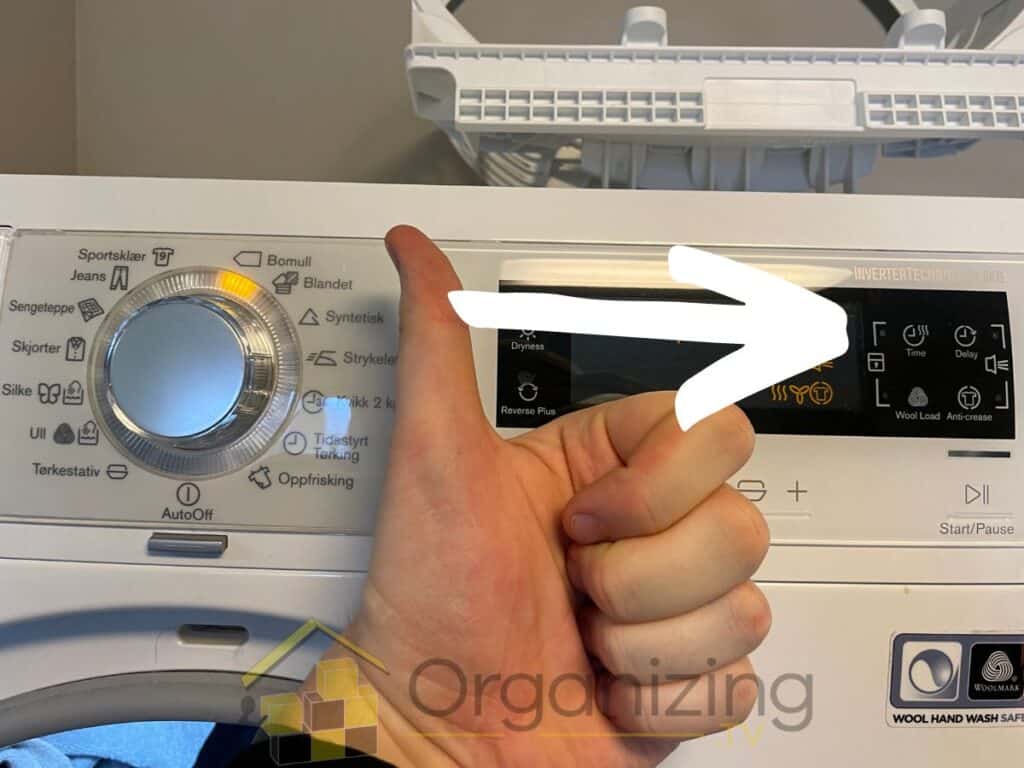
Drying uses a lot of electricity because the machine needs high heat to dry the clothes. However, you can adjust a couple of settings on your machine to help cut back on the electricity spent.
Firstly, you can reduce the heat to the lowest option. If you can get it to room temperature, even better.
Dryers also have a cool-down setting that works to dry clothes using the heat generated, and it continues until all the heat dissipates. The only downside is that your clothes will come out cool instead of warm or hot. However, the upside is that you can save on energy costs.
Some dryers have a dry sensor. This feature detects when clothes are dry and automatically stops the drying process, preventing it from unnecessarily running a full drying cycle. This prevents the machine from continuing to dry clothes that are already dry, thus reducing your electricity bill.
Additionally, you should invest in wool dryer balls. These are tightly compressed woolen balls that you toss into the dryer. They help prevent clothes from clumping by separating them.
The separation, in turn, helps heat to circulate better, which helps the clothes dry quicker. The faster they dry, the less energy is used.
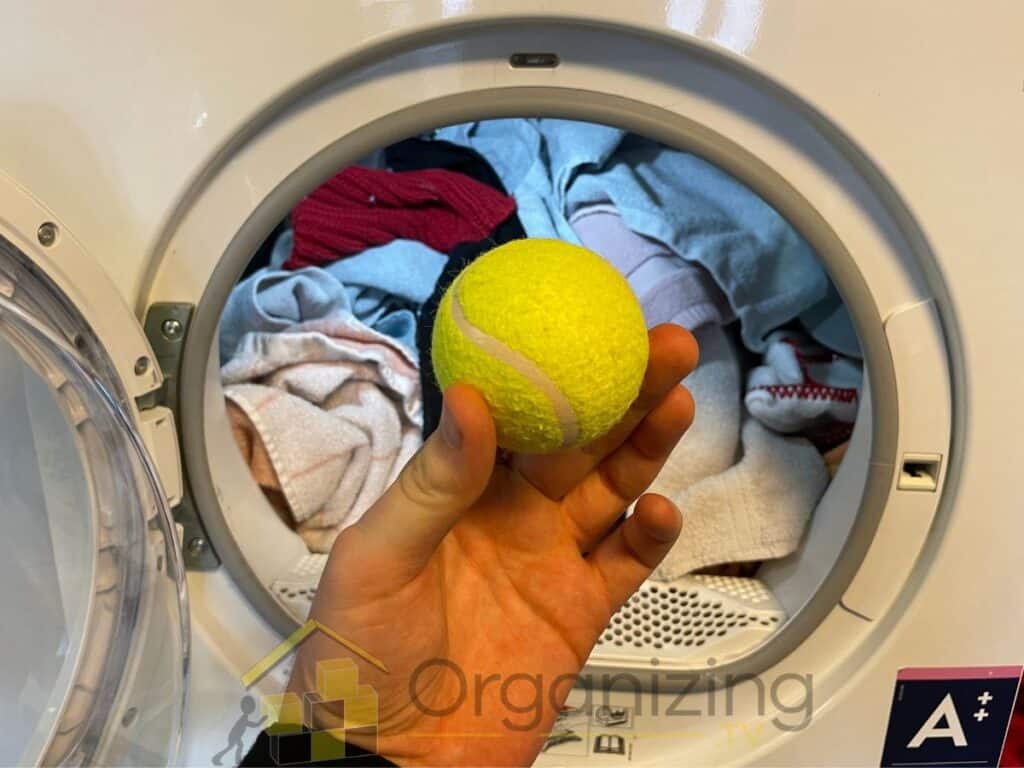
Sign Up for Time of Day Programs
Did you know that you cut your laundry costs in half by tweaking which hours you do laundry? Some electric companies offer Time of Day/Time of Use programs where electricity is cheaper during certain hours.
For most companies, these cheaper tariffs are usually available between 10 pm and 6 am, though this period may vary depending on the company. It is during these off-peak hours that there is a lower demand for energy supplies.
The US Bureau of Labor Statistics suggests that electricity costs an average of $0.163 kWh as of November 2022. Your pay per kWh depends on where you live and the season.
Energy companies offer different electricity plans for their residents. In a standard electricity plan, you’ll pay the same rate regardless of the time of day. Time of Use plans mean you’ll be charged depending on what time you drew energy from the grid.
Let’s say on the standard electricity plan, you pay $0.15 kWh and use your 1000-watt washing machine three days a week for an hour each time. This means in a month, the machine uses approximately 12 kWh, which translates to $1.8.
If you use a Time of Day program, which, for example, charges $0.12 kWh during off-peak hours, using the same scenario above, you’ll spend $1.44 per month instead of $1.8 like on the standard electricity plan.
By simply choosing to do your laundry during a time when fewer people are drawing from the grid, you can save on your laundry costs.
It’s important to note that even though you’re excited about the prospect of doing your laundry in the dead of night or the wee hours of the morning when it’s cheaper, you must never leave your washing machine unattended as you sleep. This is a fire risk.
Conclusion
Doing laundry no longer has to be an expensive experience. With tips like adjusting heat settings, using vinegar, quick wash features, and line drying clothes, you can save some money every month. I hope you’ve found these tips helpful and are ready to try them today.
You can learn more about caring for your washing machine here. This will also help cut costs over time since you won’t have to replace or repair the machine as often.
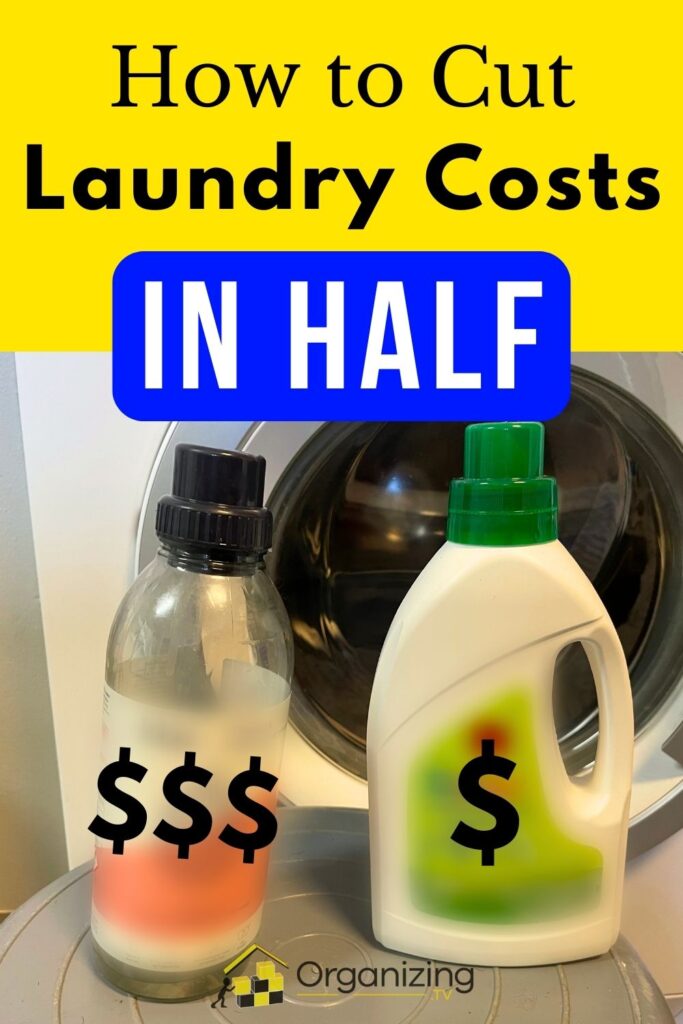

I’m an expert wardrobe organizer and a bit of a clean freak. I created this website and its YouTube channel to share practical guides about laundry and organizing. My teachings have been featured in multiple large news publications, and I’ve self-published two wardrobe organizing books and an entire course on the subject.
